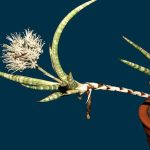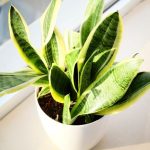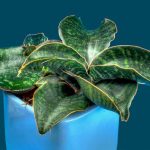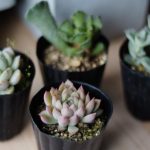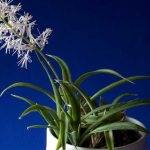Sansevieria Cylindrica Care: Growing African Spear
Discover the unique and striking beauty of the African spear plant, also known as Sansevieria cylindrica, a standout addition to any indoor plant collection. Its smooth, cylindrical leaves are sure to captivate attention.
It’s astonishing how overlooked the Sansevieria cylindrica is – a truly remarkable houseplant! Resilient and low-maintenance, this plant can be braided for a distinctive look, reminiscent of lucky bamboo. Its leaves form layers akin to a bowstring hemp plant.
Let’s delve into essential care tips to introduce this focal-point plant into your living space. Embrace the allure of the “elephant’s toothpick,” another name this exceptional plant goes by.
Essential Products for Sansevieria Cylindrica Care
- Espoma Organic Cactus Mix
- Safer Brand Neem Oil
Quick Care Guide


| Common Name(s) | Cylindrical snake plant, African spear or spear sansevieria |
| Scientific Name | Sansevieria cylindrica, synonym Dracaena angolensis |
| Family | Asparagaceae |
| Height and Spread | 6 feet tall and 2 feet wide |
| Light | Bright light to full sun |
| Soil | Well-draining cactus mix |
| Water | Water deeply, then allow to fully dry before watering again |
| Fertilizer | Liquid succulent fertilizer once per month in the growing season |
| Pests & Diseases | Vine weevils, mealy bugs |
All About African Spear
Originating from Angola, the African spear embodies everlasting charm as a perennial succulent species. Thriving in dense clusters in the wild, it spreads through creeping rhizomes underground. Offering adaptability and resilience, these snake plants are ideal for novice enthusiasts. Botanically recognized as Dracaena angolensis.
The distinctive cylindrical leaves define the Sansevieria cylindrica. Its name, cylindrical snake plant, pays homage to these unique features compared to other Sansevieria varieties. The tubular, sleek leaves often boast a dark green hue, with some sporting green-grey variegation.
Among its variations, the Sansevieria boncel stands out, known as a spear orchid or skyline spear, distinguished by its plump, short cylindrical leaves – a sight not to be missed!
The Sansevieria cylindrica (or Dracaena angolensis) isn’t just a foliage plant; it adorns itself with cream-white flower spikes upon maturity. Though modestly fragrant, these blooms add to the plant’s allure.
Various monikers for the Sansevieria cylindrica include:
- African spear plant
- Cylindrical snake plant
- Spear sansevieria
- Elephant’s toothpick
Sansevieria Cylindrica Care
Rugged and robust, the Sansevieria cylindrica can thrive in harsh environments. However, to witness its elegant growth in your space, certain care essentials must be met.
Light & Temperature
While tolerant of low light, the Sansevieria cylindrica flourishes in ample sunlight and bright conditions, showcasing optimal growth. Position it near a north-facing window or lightly shaded windows for ideal results. Outdoors, provide bright light with intermittent shade during peak sun hours for sustained health in varying temperatures.
Naturally flourishing in warm, arid regions, the plant dislikes cold temperatures. Exposure to anything below 50 °F (10 °C) can induce cold damage. Maintaining room temperature with minor fluctuations ensures its vitality.
Water & Humidity
Being drought-resistant, the Sansevieria cylindrica thrives without frequent watering. A weekly watering routine suffices during the summer, ensuring the soil dries adequately between sessions to prevent root rot. Beware of yellowing leaves or softening at the base – indicators of overwatering.
In winter, scale back to a monthly watering plan or when the soil completely dries out.
While humidity isn’t critical, avoid excessively humid environments. The plant thrives in well-aerated, dry atmospheres, minus excessive drafts.
Sansevieria Cylindrica Soil
Optimal growth of these snake plants is facilitated by a cactus potting mix for its fast-draining properties. Avoid water-retentive substrates to prevent fatal saturation. Opt for well-drained sandy soil enriched with peaty compost, promoting aeration and swift drainage.
Sansevieria Cylindrica Fertilizer
Monthly feeding with a diluted succulent fertilizer during spring to fall boosts the plant’s vitality, ensuring a thriving Sansevieria cylindrica. Refrain from excessive feeding, as the plant thrives on light fertilization and eliminates feeding during slow winter growth.
Consider enriching the soil with organic granular fertilizer for enhanced nourishment.
Repotting Sansevieria Cylindrica
Due to its slow growth nature, Sansevieria cylindrica seldom requires repotting, especially in low-light settings. However, if overcrowding ensues or the plant outgrows its container, earmark
Repotting Sansevieria
When it comes to repotting Sansevieria, it’s best to do so in the springtime. Move the plant to a container that is one size larger than its current one, ensuring a wider base for stability since Sansevieria tends to grow top-heavy. Allow the plant some time to acclimate to its new pot before resuming regular watering. Be cautious not to over-water during this transition period.
Propagation of Sansevieria Cylindrica
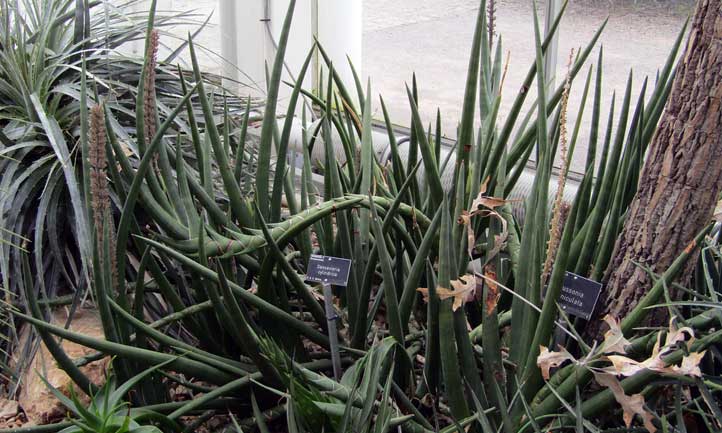
To propagate Sansevieria cylindrica, take note that it grows with rhizomes. These produce runners or offshoots which can be carefully separated from the main plant with a sharp knife for propagation. Wait until the plant stalks reach at least 6 inches in height before separating and potting these new plants individually.
Another propagation method involves leaf cuttings. Use a sharp knife to remove a rosette of leaves connected to the roots, remove old soil, and plant the cutting in fresh soil. Ensure the leaf cuttings are between 2 to 4 inches in length and plant them vertically for optimal growth.
Pruning African Spear Plants
While Sansevieria usually does not require pruning unless for cosmetic reasons, trim any yellowing leaves at their base using pruning shears if needed.
Sansevieria cylindrica is favored by many as an ornamental houseplant for its ease of cultivation and low maintenance requirements, making it an ideal choice for busy gardeners.
Troubleshooting
Growing Problems
Although generally resilient, African spear plants can face issues when placed in unsuitable conditions. The most common problem relates to poorly draining containers, leading to over-watering.
Excess moisture, cold exposure, and insufficient light can result in growth complications, such as root rot with yellowing leaves. If this occurs, trim away any healthy parts of the plant, repot it in well-draining soil, and adjust watering habits.
Pests
One common pest issue affecting Sansevieria cylindrica is vine weevils, which feed on the plant’s leaves, causing considerable damage. Treat infestations by drenching the soil with neem oil or an appropriate pesticide upon detecting adult weevils. Severe root damage may be irreparable.
Diseases
Sansevieria cylindrica is rarely impacted by diseases, with fungal infections resulting mainly from poor soil drainage and over-watering. Treat fungal issues with fungicides and ensure the soil remains well-drained to prevent further complications.
Frequently Asked Questions
Q: My Sansevieria cylindrica is becoming leggy. What could be causing this?
A: Inadequate sunlight exposure or positioning in dark areas may be causing the leggy growth. Place the plant where it can receive ample filtered sunlight for healthy development.
Q: The leaves of my African spear plant are curling. How can I address this?
A: Leaf curling often indicates under-watering, especially in hot weather. While Sansevieria is drought-tolerant, ensure it receives adequate water to prevent prolonged dryness.
Q: Is Sansevieria cylindrica toxic to cats?
A: Yes, the plant contains saponins that can cause mild illness in cats. Keep it away from pets to avoid potential health issues.
Q: Can Sansevieria cylindrica survive in low-light conditions?
A: Yes, it can thrive in low-light settings, making it a versatile choice for indoor spaces.
Q: How large can Sansevieria cylindrica grow?
A: The African spear plant can reach up to 6 feet in height and 2 feet in width.
Q: Does cylindrical snake plant require sunlight?
A: It thrives in bright, indirect light, making it suitable for indoor environments away from direct sun exposure.
Q: Is it possible to trim Sansevieria cylindrica?
A: Trimming dead or diseased leaves is acceptable, and healthy cuttings can be used for propagation purposes.
Q: Can I place a snake plant in a room without windows?
A: Sansevieria can adapt to low-light conditions and does not necessarily require direct sunlight, making it an excellent choice for windowless rooms.


